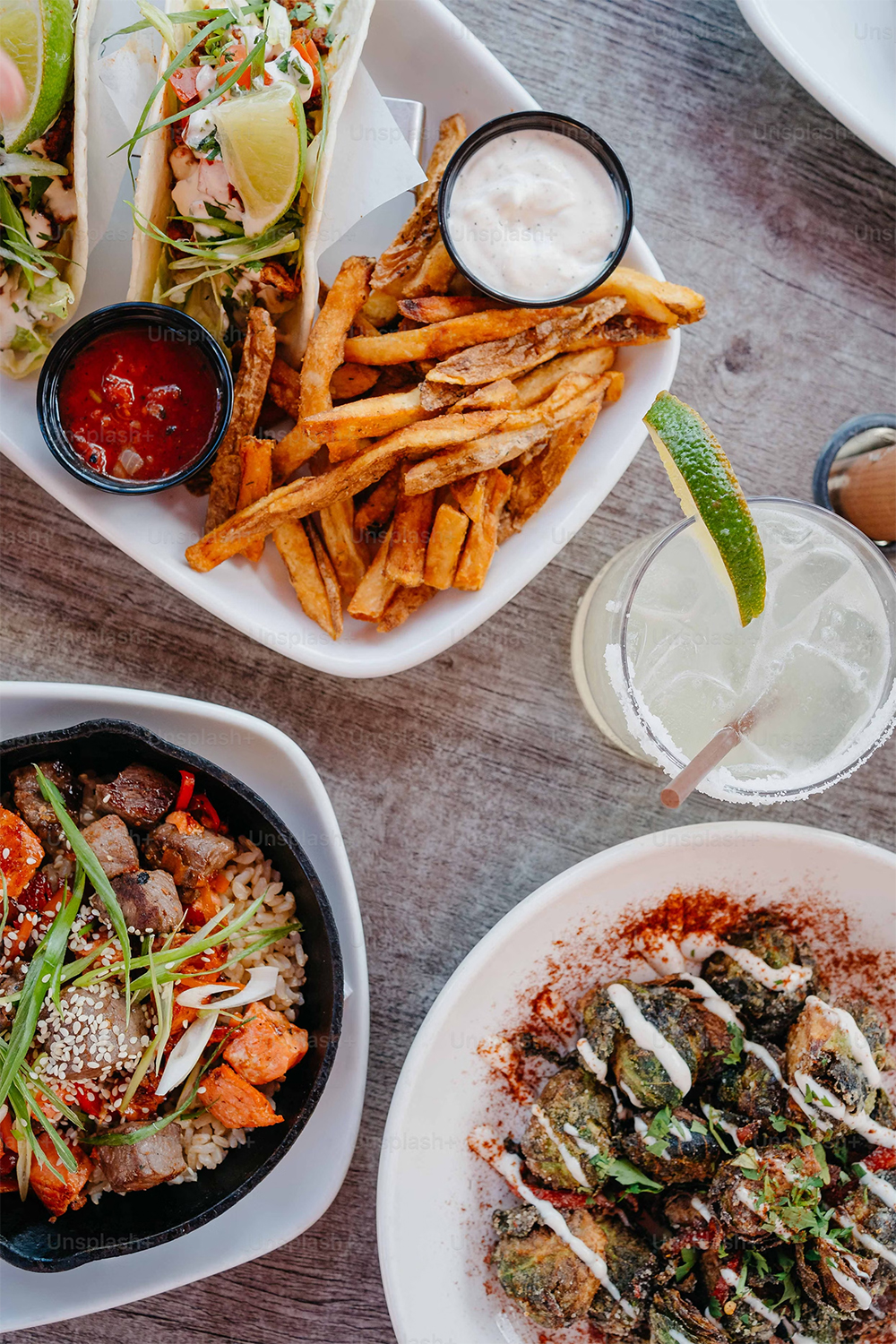We Accelerate Revenue for Food & Beverage Industry Startups and Growth Companies
Get a Complimentary
Digital Marketing Audit
Get Your Digital Marketing Presence Audited
SEO Audit
on-page SEO, competition analysis, backlinks, and domain authority
Website Performance
conversion rates, traffic levels, and landing pages
Recommendations
optimize your digital presence to generate more leads
The Importance of Digital Strategy for Food Industry Businesses
In today’s digitally driven world, food businesses must harness the power of the web to stay competitive and relevant. A robust digital strategy enables restaurants, food retailers, and food manufacturers to reach prospective customers, engage with loyal patrons, attract investors, and build their brand presence. The internet offers a myriad of opportunities to connect with various stakeholders, providing a platform for businesses to showcase their unique offerings, promotions, and achievements. In an era where online presence significantly influences consumer decisions, food businesses can no longer afford to neglect digital channels.
The role of digital strategy in the food industry extends beyond mere visibility. It encompasses everything from enhancing the customer experience to fostering a sense of community among patrons and food enthusiasts. By strategically leveraging digital tools and platforms, food businesses can create a dynamic and interactive environment that supports customer loyalty and growth. In this context, a well-planned digital strategy is not just an option but a necessity for businesses aiming to excel in the modern food industry landscape.


Attracting Customers Through Digital Channels
The primary goal of any food business is to attract and retain customers. A well-crafted digital strategy is essential for reaching prospective customers who increasingly rely on the internet to research their dining and shopping options. This strategy includes having an informative and user-friendly website, engaging content, and an active social media presence. For example, optimizing the business’s website for search engines (SEO) ensures that it appears prominently in search results when customers are looking for dining options, grocery stores, or food products. Additionally, creating compelling content such as blog posts, videos, and customer testimonials can provide valuable information and answer potential questions, helping to convert website visitors into customers.
Social media platforms like Facebook, Instagram, and Twitter offer excellent opportunities to engage with prospective customers, share updates, and build a community around the business. Through targeted ads and organic posts, businesses can reach a broader audience and generate interest in their offerings. Virtual tours, cooking demos, and interactive webinars can provide customers with a taste of the products and services, further enhancing their interest and likelihood of purchase. Moreover, chatbots and personalized email campaigns can offer real-time assistance and tailored information, making the decision-making process smoother and more appealing.
Engaging Customers and Building Community
Food businesses thrive on the support of their community, including regular customers, local food enthusiasts, and industry partners. Engaging these supporters through digital channels can strengthen relationships and foster a sense of belonging. Regularly updating the business’s website with news, events, and promotions keeps customers informed and involved. Email marketing campaigns can be tailored to different segments of the community, providing relevant content and calls to action. Social media also plays a crucial role in community engagement. Platforms like Facebook and Instagram are ideal for sharing success stories, upcoming events, and opportunities for involvement.
Creating interactive content such as polls, Q&A sessions, and live streams can further enhance engagement and encourage supporters to take part in the business’s activities. By leveraging these digital tools, food businesses can build a loyal and active community that contributes to their long-term success. Additionally, virtual events and online community forums can provide platforms for customers to connect, share experiences, and contribute to the business’s growth. These digital initiatives not only strengthen community bonds but also create a sense of pride and ownership among supporters.


Attracting Investors and Securing Funding
Securing funding through investments is vital for the growth and sustainability of food businesses. A strategic digital approach can significantly enhance efforts to attract investors. A dedicated section on the business’s website for investor relations, highlighting the impact of investments and providing easy access to financial information, can encourage investment. Sharing stories of how investments have made a difference can also inspire potential investors. Email campaigns targeting potential investors with personalized messages and updates can increase engagement and investment. Social media campaigns, particularly during fundraising events or drives, can reach a wide audience and create a sense of urgency and community participation.
Platforms like LinkedIn can be used to connect with potential investors and build professional networks that support funding initiatives. By effectively communicating their needs and the impact of investments, food businesses can attract and retain investors, ensuring continued financial support. Furthermore, digital tools such as crowdfunding platforms and peer-to-peer investment campaigns can expand the reach and impact of funding efforts. These platforms enable investors to easily share their contributions and encourage their networks to support the business, amplifying its funding capabilities.
Building the Brand of Food Industry Businesses
A strong digital presence is essential for building and maintaining the brand of a food business. Consistent branding across all digital channels helps create a cohesive and recognizable image. This includes a visually appealing and user-friendly website, engaging social media profiles, and regular content updates. Sharing success stories, achievements, and unique aspects of the business can highlight its strengths and differentiators. SEO strategies ensure that the business appears prominently in search results, reinforcing its brand presence online.
Additionally, online reviews and testimonials can significantly influence perceptions. Encouraging satisfied customers to leave positive reviews on platforms like Google, Yelp, and Facebook can enhance the business’s reputation. Monitoring and responding to reviews, both positive and negative, shows that the business values feedback and is committed to continuous improvement. By focusing on these elements, food businesses can build a powerful brand that attracts customers, supporters, and investors.
Digital storytelling, through blogs, videos, and social media posts, can humanize the business and create emotional connections with the audience. Highlighting the personal journeys of staff, customers, and suppliers can showcase the transformative impact of the business, reinforcing its brand values and mission.

Effective Website Design and Content
Menu Information
Detailed descriptions of dishes, ingredients, and dietary options. Prospective customers should be able to easily find information about what is offered, including prices and specials.
Ordering and Reservations
Clear guidelines on how to place orders, make reservations, and utilize delivery or pickup services. This helps customers understand what is needed to enjoy the business's offerings.
About Us
Insights into the business’s history, mission, and team. This section can include virtual tours, staff testimonials, and information about the business's values and culture.
Success Stories
Testimonials and case studies showcasing satisfied customers and their experiences. These stories can inspire prospective customers and demonstrate the value of the business's offerings.
Events and Promotions
Information about upcoming events, special promotions, and seasonal offerings. Highlighting these can enhance customer engagement and drive traffic.
High-quality visuals, such as images and videos, can enhance the appeal of the website. Virtual tours of the restaurant or store can provide an immersive experience for prospective customers. Regularly updating the website with news, events, and promotions keeps it dynamic and engaging.
Search Engine Optimization (SEO) for Food Industry Businesses
SEO is a critical component of a digital strategy, ensuring that the business’s website ranks highly in search engine results. This involves optimizing website content with relevant keywords that prospective customers are likely to use when searching for dining options, food products, or grocery stores. For example, using keywords like “best Italian restaurant,” “organic grocery store,” or “gourmet food delivery” can attract targeted traffic. Creating high-quality, informative content such as blog posts, articles, and recipes can also improve search rankings.
Additionally, technical SEO practices like improving site speed, ensuring mobile-friendliness, and using proper meta tags and descriptions can enhance visibility. Backlinking, or getting other reputable websites to link to your content, further boosts SEO efforts. By investing in SEO, food businesses can increase their online visibility and attract more visitors to their websites. Moreover, local SEO strategies can help businesses attract customers from specific geographic areas by optimizing content for local searches and listing the business on local directories and Google My Business.


Social Media Strategy for Food Industry Businesses
Social media platforms offer powerful tools for engaging with prospective customers, supporters, and investors. Each platform has its unique strengths and audience demographics:
- Facebook: Ideal for sharing news, events, and stories. It allows for community building through groups and pages. Businesses can create Facebook groups for different segments of their audience, such as food enthusiasts, loyal customers, and local community members, to foster engagement and provide targeted content.
- Instagram: Perfect for visual storytelling. Sharing photos and videos of dishes, behind-the-scenes content, and customer experiences can attract younger audiences. Instagram Stories and Reels can provide behind-the-scenes glimpses and highlight day-to-day activities at the business.
- LinkedIn: Useful for professional networking. It can be used to connect with industry partners, potential investors, and corporate clients. Businesses can share thought leadership content, industry trends, and partnership opportunities to engage with a professional audience.
- Twitter: Great for real-time updates and engagement. It can be used to share news, quick updates, and interact with followers. Live-tweeting events and using relevant hashtags can increase visibility and engagement.
Regularly posting engaging content, responding to comments and messages, and using hashtags can increase reach and engagement. Running targeted ads on these platforms can further boost visibility and attract specific audiences. Additionally, social media analytics tools can provide insights into the performance of posts and campaigns, allowing businesses to refine their strategies and optimize engagement.
Email Marketing for Food Industry Businesses
Email marketing remains one of the most effective ways to communicate with prospective customers, current customers, supporters, and investors. Personalized email campaigns can provide relevant information to different segments of your audience. For prospective customers, emails can include information about menu offerings, special promotions, and upcoming events. For current customers, updates on new dishes, loyalty programs, and seasonal specials can be useful. Supporters and investors can receive newsletters with news about the business, invitations to events, and opportunities to invest or contribute.
By segmenting your email list and tailoring your messages, you can ensure that your communications are relevant and engaging. Email automation tools can further enhance the effectiveness of email marketing by allowing businesses to send timely and personalized messages based on user behavior and preferences.


Digital Advertising for Food Industry Businesses
Digital advertising can significantly enhance the reach and effectiveness of your marketing efforts. Platforms like Google Ads and social media ads allow for highly targeted campaigns that can reach specific demographics based on age, location, interests, and more. For example, Google Ads can target individuals searching for dining options, while Facebook ads can target users based on their interests and behaviors. Retargeting ads, which show ads to users who have previously visited your website, can remind prospective customers to place an order or visit your restaurant. Display ads on relevant websites can also increase visibility. By investing in digital advertising, food businesses can attract a larger audience and drive more conversions.
Additionally, video ads on platforms like YouTube can showcase the business’s ambiance, menu, and customer experiences, creating an engaging and informative experience for prospective customers. By measuring the performance of digital ad campaigns through analytics, businesses can optimize their strategies and maximize their return on investment.
Conclusion
A comprehensive digital strategy is essential for food businesses looking to stay competitive in today’s digital landscape. By leveraging the power of the web, businesses can attract customers, engage with supporters, secure funding from investors, and build a strong brand presence. Key components of a successful digital strategy include effective website design and content, SEO, social media engagement, email marketing, and digital advertising. By focusing on these elements, food businesses can create a cohesive and powerful online presence that drives growth and success.
Moreover, integrating these digital strategies with offline initiatives can create a seamless and holistic approach to marketing and engagement. For example, promoting on-site events through digital channels can increase attendance and participation. Similarly, using digital platforms to showcase the outcomes of offline activities, such as customer events, product launches, and community outreach programs, can enhance the business’s visibility and reputation.

